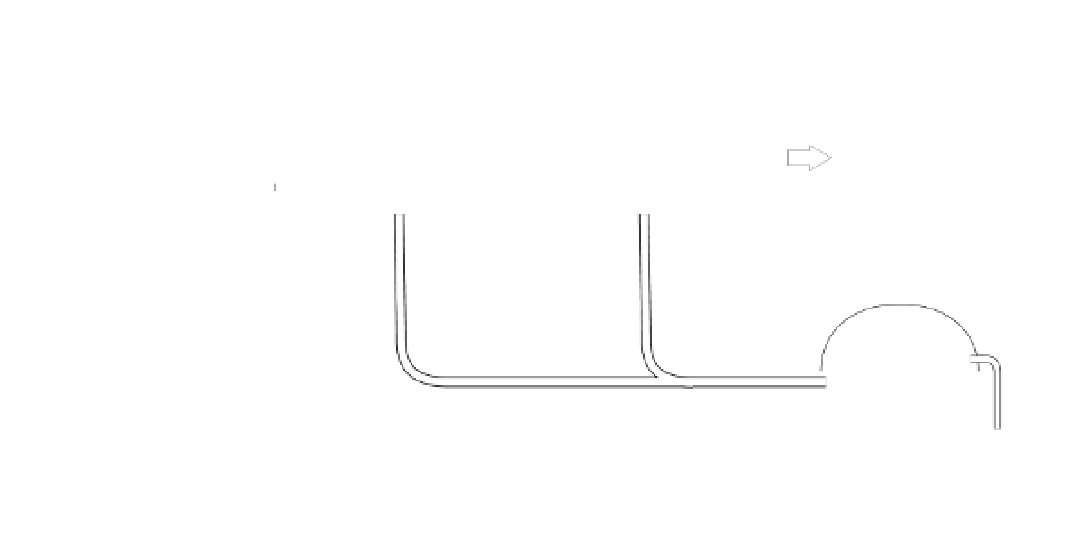Geoscience Reference
In-Depth Information
Primary
Secondary
Tertiary
influent
effluent
discharge
screening
sedimentation
biological
sedimentation
nutrient stripping
sludge treatment
methane
Figure 7.6
Schematic representation of waste water treatment from primary through to tertiary treatment, and
discharge of the liquid effluent into a river, lake or the sea.
used as a recommendation until the 1970s when a
system of legal consents to discharge was introduced
(see p. 147).
The processes operating at a waste water treat-
ment works are very simple. They are summarised
below and in Figure 7.6 (NB not every sewage
treatment works will have all of these processes
present).
toilet flushing, and also from storm runoff in an
urban environment where there is a combined
sewage/stormwater drainage scheme. Of the solids
involved, the majority are organic and about half
are dissolved in the water (TDS). Of the organic
compounds the breakdown is approximately 65
per cent nitrogenous (proteins and urea), 25 per
cent carbohydrates (sugars, starches, cellulose) and
10 per cent fats (cooking oils, grease, soaps)
(Gray, 1999). Typical values for TSS and BOD at
different stages of sewage treatment are provided in
Table 7.6.
In tertiary treatment an effort is sometimes (but
not always) made to reduce the level of nitrate and
phosphorus in the discharged waste. In some cases
this is achieved through final settling ponds where
the growth of aquatic flora is encouraged and
the nutrients are taken up by the plants before dis-
charge into a stream. Of particular use are reeds
which do not die back during the winter (in
temperate regions). This is a re-creation of natural
wetlands that have been shown to be extremely
efficient removers of both nitrogen and phosphorus
from streams (e.g. Russel and Maltby, 1995). Other
methods of phosphate removal are to add a lime or
metallic salt coagulant that causes a chemical
1
Primary treatment: screening and initial
settlement.
2
Secondary treatment: encouraging the biological
breakdown of waste and settling out of remain-
ing solids. This can take place either in trickle
bed filters or activated sludge tanks. The
main requirement is plenty of oxygen to allow
micro-organisms to break down the concentrated
effluent.
3
Tertiary treatment: biodigestion of sludge (from
earlier settling treatment); extra treatment of dis-
charging effluent to meet water-quality standards
(e.g. phosphate stripping, nitrate reduction).
Raw sewage entering a sewage treatment works
is approximately 99.9 per cent water (Gray, 1999).
This is derived from water used in washing and









